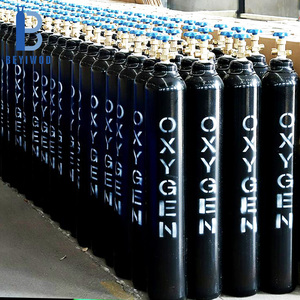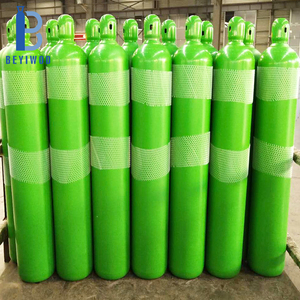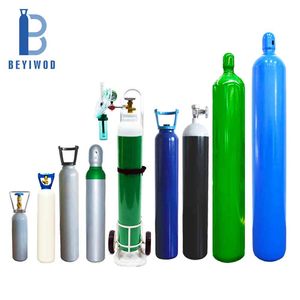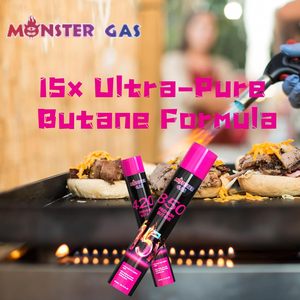
All categories
Featured selections
Trade Assurance
Buyer Central
Help Center
Get the app
Become a supplier

(4294 products available)













































Gas cylinder pallets are presented in various forms to cater to the diverse requirements of industries dealing with gas operations.
Standard gas cylinder pallets
The most widely used are standard gas cylinder pallet hand trucks, which are primarily used to store and move a number of fuel cylinders. Most of them are rectangular, have a low base for easy lifting with a fork or pallet truck, and are open latticework patterns to allow easy access. They are commonly used in industries, and in warehouses and are useful in providing safe storage and basic movement capability.
Stackable gas cylinder pallets
Stackable gas cylinder pallets can be stacked above one another when not in use, hence saving space. These pallets are some of the most useful and effective space savers in industries that require large quantity storage. They have been manufactured so as to allow the cylinders' weight to be evenly distributed on the pallets underneath them as a means of safety and stability during storage stacking.
Forklift gas cylinder pallets
Pallets of this type are suitable for use with forklifts and are capable of supporting a complete range of gas cylinders. They are produced with fork openings to facilitate handling by forklifts. This type of pallet is suitable for facilities that routinely use forklifts to transport goods.
Heavy-duty gas cylinder pallets
These gas cylinder pallets are intended for difficult working conditions and can withstand the weight of many gas cylinders at the same time. Usually made from thicker metals or plastics, these pallets are widely used in workshops or any other operation whereby the gas cylinders storage has to be extremely secure.
Wheel-mounted gas cylinder pallets
The usefulness of gas cylinder pallets with wheels is that it increases the ease of transporting gas cylinders from one point to another. These are mounted on wheels to facilitate transportation of the gas cylinders from one location to another easily; they are ideal for operations that require frequent movements of the cylinders. Brakes are common on many wheel-mounted cylinder pallet designs to enhance stability once the unit is at rest.
It is important for buyers to understand the different design features of gas cylinder pallets since they can affect safety and efficiency.
Open-decked design
Due to the open top structure, gas cylinder pallets with open decks enable easy access to each and every cylinder. The open deck construction minimizes the danger of trapping gas leaks and facilitates ventilation, which is suitable for environments where ventilation is paramount. The open decking design enables ease of access to the cylinders for use and maintenance and minimal risk of gas accumulation, hence ideal for risky operational environments.
Closed-deck design
The enclosed deck design serves to protect and seal the gas cylinders from external hazards as well as guarantee stability. It is better suited for stationary storage in one position, as this prevents the cylinders from possibly rolling off or being damaged by outside forces. Closed-deck pallets are ideal for several applications because they provide a more even surface for movement and storage.
Spill containment design
Containment of spillage pallets is fitted with sidewalls and a bottom basin that is meant to contain any potential leakage or spillage of the contents of the cylinders. These pallets play a pivotal role in protecting the ground and minimizing environmental hazards encountered in the storage of gases or liquids. They are a mandatory part of operations that need compliance with environmental laws such as those concerning spill control.
Runner or leg support design
These gas cylinder pallets are made with runners or legs underneath the deck to support heavy loads. Runners or legs help with loading and unloading using forklifts or pallet jacks. This design is intended for heavy-duty applications such as warehouses or industrial facilities. Runners improve stability by making the load more evened out, preventing the pallets from bending or breaking under serious weight.
Customizable design
Some gas cylinder pallets offer customizable features such as the number of tiers or dimensions based on the user‰Ûªs needs. Options for colors and whether the design is stackable, spill containment, or closed deck are customizable for distinct uses. These customization options are particularly useful for companies that require specific configurations for compliant and efficient operations.
Gas cylinder pallets must meet certain specifications to work properly, and proper maintenance can increase their lifespan.
Load capacity
The gas cylinder pallet must be heavy-duty and have a high load capacity, as this is one of the main criteria for choosing any gas cylinder pallet. The maximum weight that the pallet can handle should be at least as much as the total weight of the gas cylinders used on it, plus the extra weight. Overloading a pallet can cause dangerous consequences, both for the pallet itself and for the operating environment, including damage to the cylinders and injury to the workers. Overloading can also affect long term wear and damage of the equipment.
Material durability
This specification is key since it relates to the general resistance of a pallet to abrasion. Plastics that have high strength or mild steel are often used in the construction of gas cylinder pallets, hence exposure to the elements or chemical interactions will not degrade them. In areas with extreme conditions or where pollutants are present, one should select a material that is well suited to resist corrosion. When choosing a gas cylinder pallet, consider the issue of material durability and how it influences the application of the pallet.
Cylinder securing features
Devices that secure cylinders on pallets may be lashing, cages, or corner posts, and are typical in gas cylinder pallets intended to maximize storage safety. Those without securing elements, such as rims or posts, may allow the cylinders to move or topple over, which may prove dangerous. Look for features that secure the cylinder to keep them in place during movement and storage to increase safety.
Regular inspections
It is advisable that users of gas cylinder pallets should periodically examine the pallet for any deterioration or represent any physical harm that could cause danger sometime soon. Hardware items including cracks, rust, and damaged runners should not be overlooked during inspection. Those materials that have deteriorated or have faulty hardware must be disposed of or replaced so that they do not present any danger to the people working at the place of work.
Cleaning practices
Gas cylinder pallets may also be contaminated with chemical substances, gases, or other materials, which must be cleaned as soon as possible. Debris can be removed, but chemicals should first be washed before a chemical spill occurs. To clean, use a wet sponge and water, but do not use an abrasive cleaning method that will damage the material. Once cleaned, the chemicals will be eliminated to provide a safer working environment.
Storage conditions
Storage conditions of gas cylinder pallets also affect their valued life. It is advisable to keep the pallet in a shaded, dry region so that it is no longer exposed to the elements. It's also good practice to store the pallet indoors in a climate room to eliminate temp extremes that could harm the material. Proper treatment will minimize the wear of gas cylinder pallets.
Size of gas cylinders
To ensure safety and reliability, the gas cylinder pallet needs to be compatible with the gas cylinder size being used in the operation. A right-sized pallet will accommodate the cylinder without overcrowding or having excess space, which will help to avoid movement and secure the load. This consideration is important for decreasing safety problems and assuring operational efficiency because it involves choosing a gas cylinder pallet with the appropriate dimensions.
Load capacity
Another issue related to selection is that the gas cylinder pallet has sufficient load capability or capacity to handle the weight of the cylinders stored on it and any other hardware entailed. The maximum weight the pallet can withstand must never be exceeded since this may result in breakdowns and dangerous mishaps. To ensure safe and efficient operations, correctly assess the total weight and load that will be placed on the pallet and select one that will meet the required specifications.
Material and durability
Because of the construction material used to make the gas cylinder pallet, it will determine how long it will last and how effective it will be. Plastics or metals, such as corrosion-resistant steel, are common materials that can withstand environmental hazards or chemical exposure. Selecting a robust and weatherproof material will ensure the gas cylinder pallet's functionality over time and more reliable performance in hazardous conditions.
Compliance with safety regulations
Work with the gas cylinder pallet that meets the necessary legal requirements for the industry by consulting the occupational health and safety policies regarding workplace safety. This is crucial because unregulated substances can cause safety hazards and legal enforcement problems. Ensure the pallet is in compliance with all regional and national laws to promote a safer working area and avoid legal responsibilities as well as repercussions.
Mobility and handling features
The characteristics of mobility, such as brakes, handles, and wheels, should be analyzed when gas cylinder pallets are to be managed and transported easily. These functions make transferring the pallets in tight spaces or between different locations within a facility easy and more practical. It is advisable to consider the mobility requirements of the operation before selecting a gas cylinder pallet.
A1: The primary aim of a gas cylinder pallet is to securely store and move several gas cylinders while acting as a buffer to prevent them from toppling over or causing damage.
A2: Yes, gas cylinders that are frequently exposed outdoors are subject to corrosion, although most pallets are made from weather-resistant materials like stainless steel or treated plastic.
A3: Some gas cylinder pallets, such as standard and spill containment designs, are stackable to save space, while others are not due to secure features that restrict stacking possibilities.
A4: Gas cylinder pallets can be adjusted, allowing users to choose the material, color, deck configuration, and securing options based on certain uses for efficiency and safety purposes.
A5: Runners or feet help prevent pallettes from bending or breaking when heavy loads are transported through forklifts or pallet jacks by supporting the deck and distributing the weight evenly.